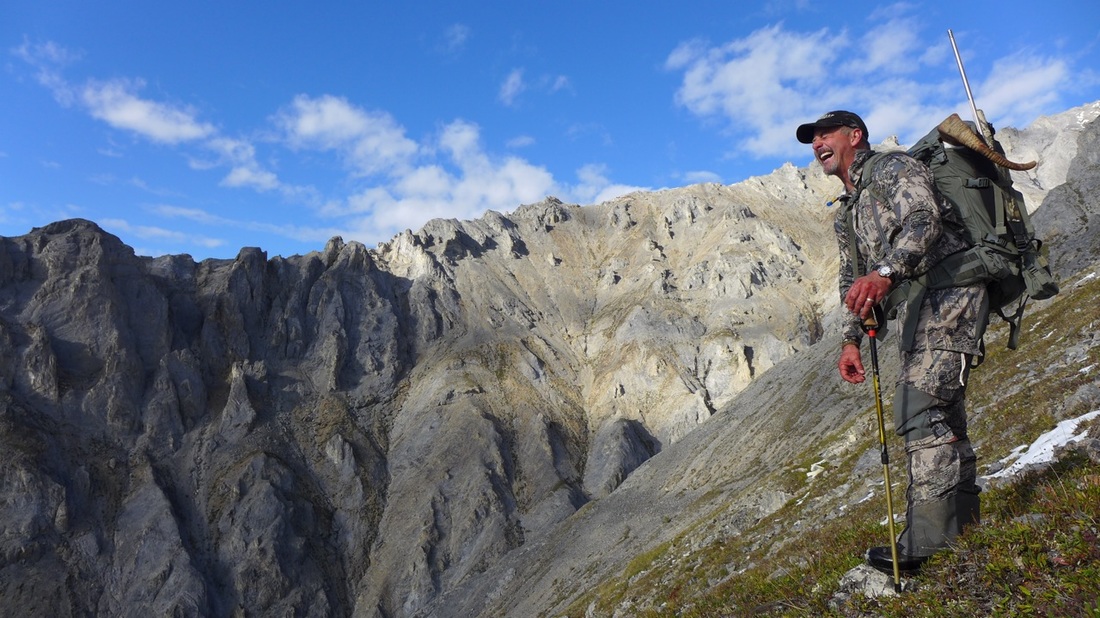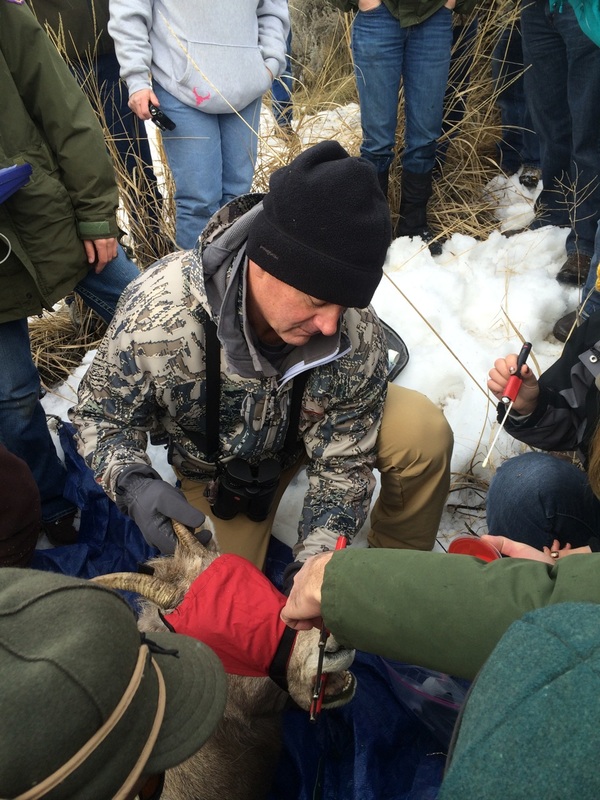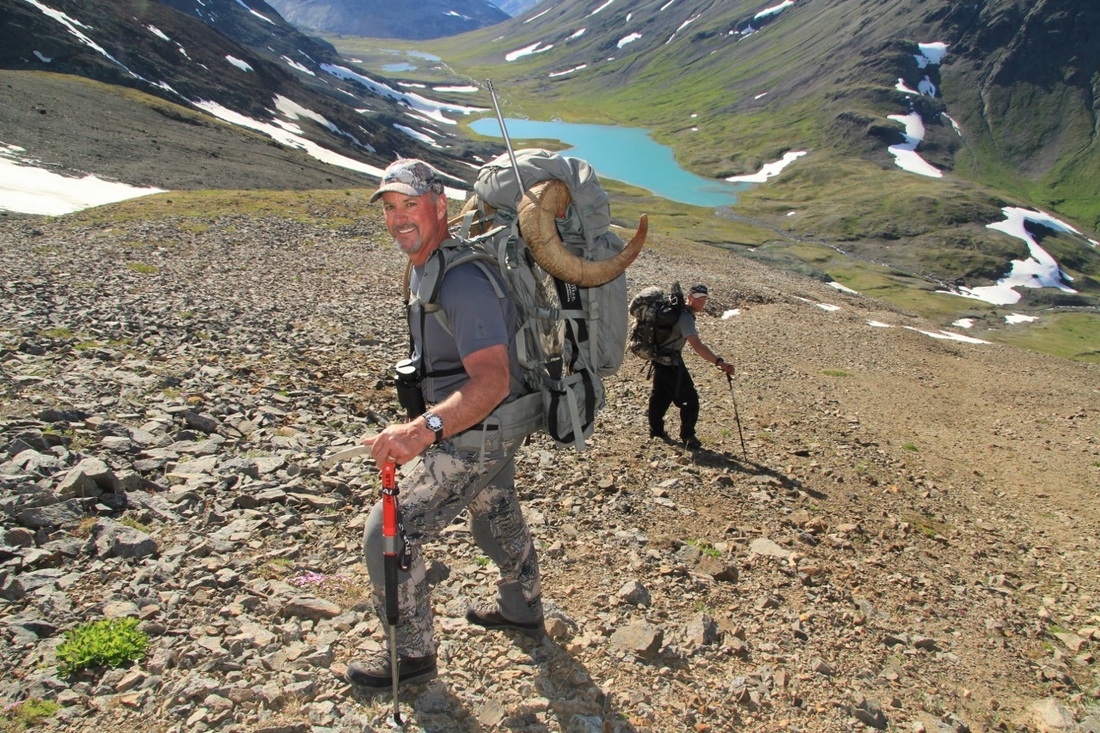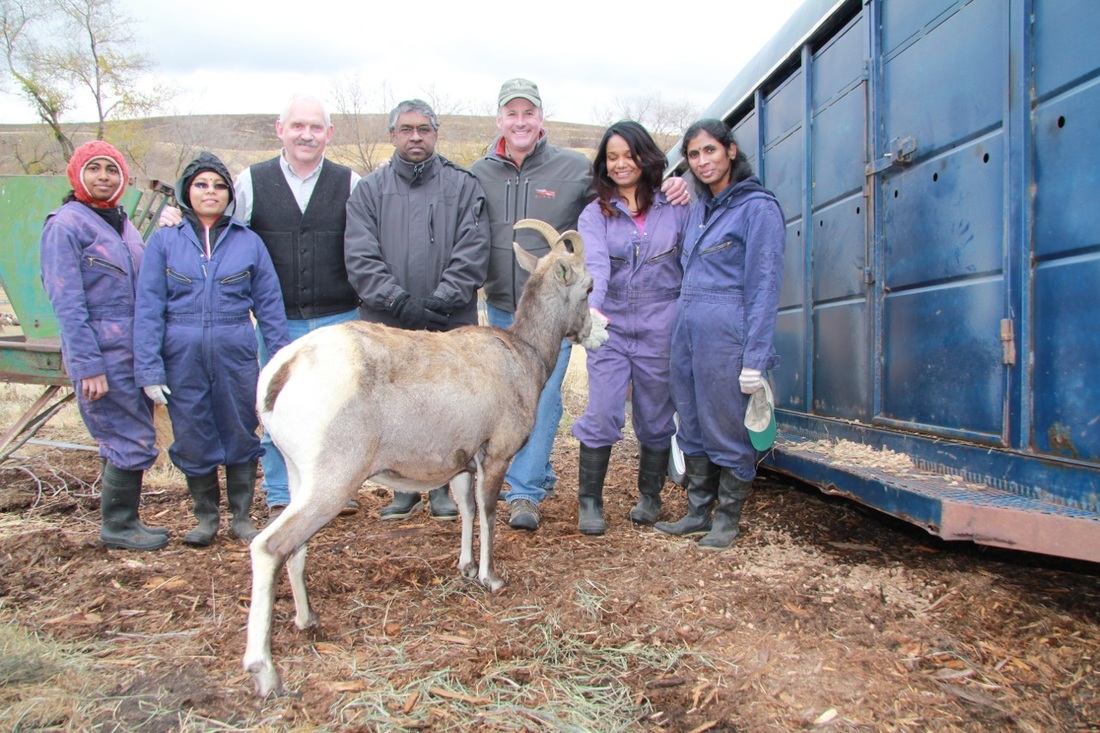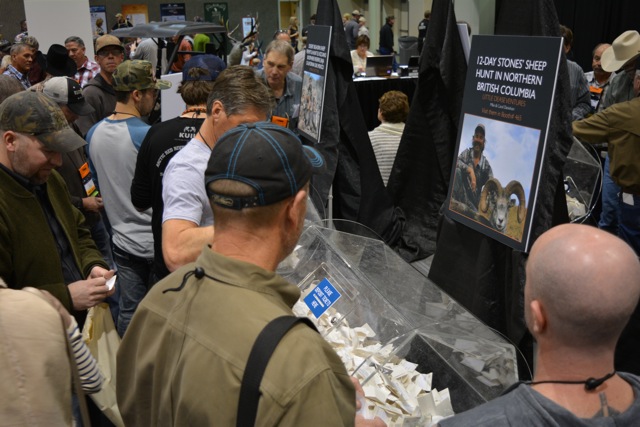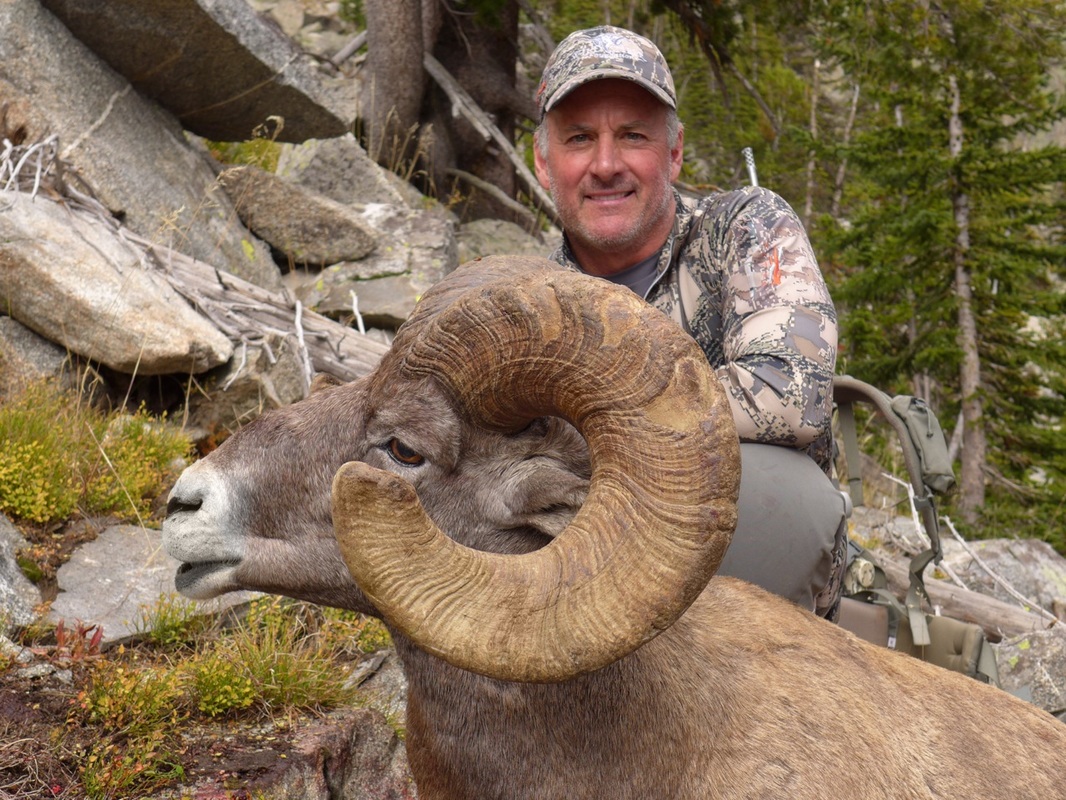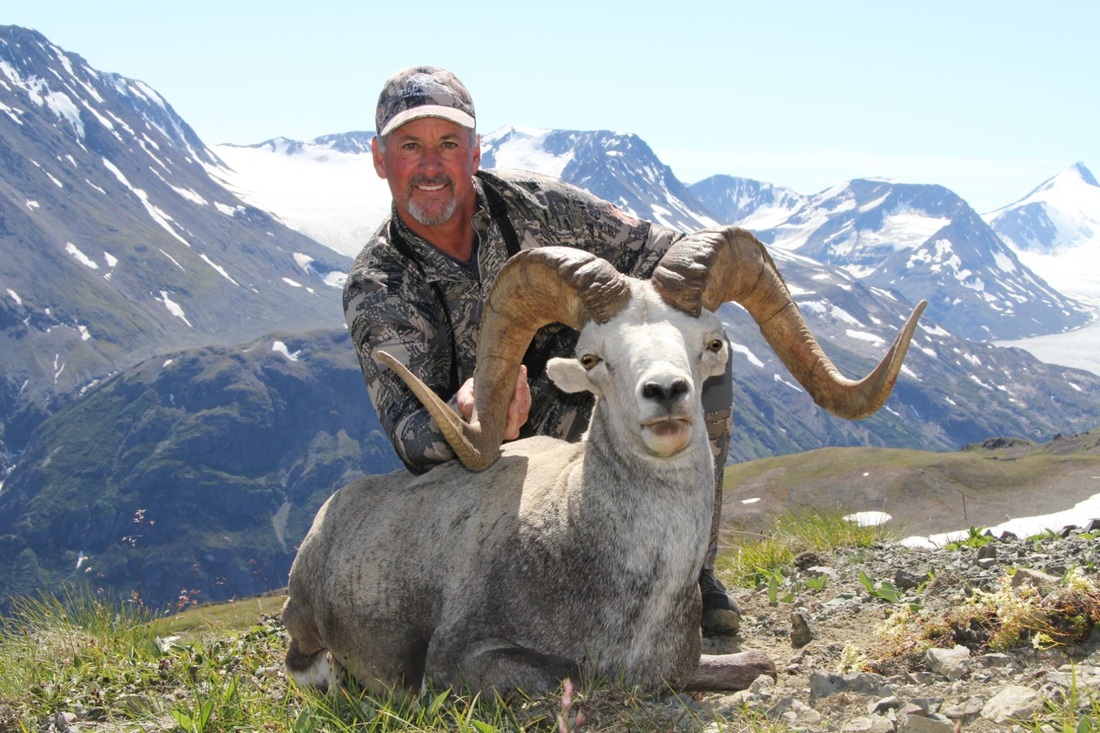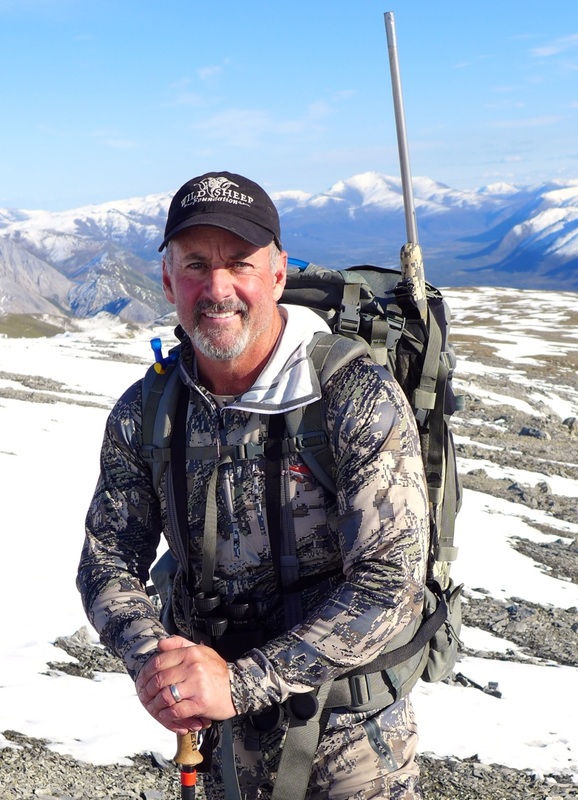Conservation in the modern sense can be a counter intuitive concept to many non-hunters. The idea that those that spend a large portion of their year planning, researching and preparing to kill the very species they profess to love and respect simply does not compute with the average non-hunting citizen. To the committed hunter-conservationist of course this is quite simply a reality and necessity of modern times.
But when you really drill down on just how hunting “pays” for conservation, things get a little murkier. Where do we draw the line between the “acceptable” commoditization of an animal through tag and license fees and the “unacceptable” trophy fees paid by the elite to harvest singular trophies both here on North American soil and around the world? It takes vision, creativity, experience and good old fashioned passion to navigate the mine field that is conservation and stewardship across Provincial, State, National and International borders in the 21st century.
Gray Thornton brings all of these characteristics and many more to bear in his leadership of one of the shining lights of true conservation today, the Wild Sheep Foundation.
From the brink of financial distress just a few years ago to record setting years of fundraising and Sheep Show success, Gray and his team at WSF have brought the kind of agile, passionate and creative thinking to the table that the future of sheep populations and sheep hunting will require in the decades to come. There are few organizations that put as much money “back on the mountain” as the WSF and if after reading this article, you’re not inspired to join or donate in whatever way you can we’ll be at a loss for words.
What I wanted to start with Gray is an overview of both the history and mission of the Wild Sheep Foundation. Although many of our readers will be familiar with the WSF as both a brand and a conservation organization, there will be many that don’t fully grasp just how involved the WSF is in the grand scheme of conservation both in North America and across the globe.
You bet. The first place to start is with the old adage we have within the hunting and conservation community that’s “if it pays, it stays”. As hunter-conservationists have always claimed, if an animal or species is considered a resource that has a value, we will utilise it, we will conserve it, and we will have it in the future. There was an Executive Director of the National or American or North American Bison Growers Association that made a great, great quote that I’ve used in speeches numerous times now. I can’t remember the guy’s name but he said, “If you want to save something eat it – that is why we have more chickens than bald eagles.”
Sadly, the wild sheep species of the world don’t pay their way. Unlike deer and elk, there aren’t hundreds of thousands of sheep hunters going afield every year, spending money on tags and licenses that adequately support their conservation. I don’t have the data for BC regarding what percentage of the Ministry of the Environment’s budget goes to sheep conservation specifically but south of the border in most States that have wild sheep, it’s a very small percentage. The total is usually less than 1% of the annual state Game & Fish budget. So with that being stated, when we say, “well if it pays it stays”, guess what? Wild sheep don’t pay! So what’s happened, historically speaking? Let’s use the bighorn as our “case study”. From an estimated high of 2 million sheep in North America before European settlement, wild sheep populations plummeted to roughly 25,000 sheep by the early 1960s. They reached their all-time low in the late sixties, early seventies. It was just a catastrophic loss, in the latter stages primarily through contact with domestic sheep and goats in the mid 20th century but it started with unregulated hunting from the early days of the settlement of the West in the 1800s. We eventually got our ducks in a row with the adoption of what we now know as the North American Model of Wildlife Conservation pioneered by Canadians and Americans at the turn of the century.
But there was this group of sheep hunters that had this passion for wild sheep, from Wisconsin of all places, and several other organisations such as the Rocky Mountain Bighorn Society in Colorado and the Fraternity of the Desert Bighorn that was formed in the early sixties, the oldest sheep organisation in Nevada. Nevada had a remnant population of wild sheep in the 1960s and 1970s. Remnant – they couldn’t even tell you how many but it was less than one hundred. Now they have 11,000.
What happened is so typical of whether it’s the Elk Foundation, Ducks Unlimited, Wild Sheep Society of BC or the Ontario Federation of Anglers and Hunters, people and these groups started stepping up as advocates. As usual it’s the people with a passion for wildlife that come together and do something special for a particular species. And that’s what happened. So you had a group of people form the Foundation for North American Wild Sheep. They then moved that Foundation and incorporated it in Iowa in 1977 and then in the eighties, the Foundation moved to Cody, Wyoming and it’s been here ever since. In 2007 we changed our name to Wild Sheep Foundation to more accurately represent our current global reach. Yes of course we’re North America focused and always will be but we wanted the name to mean something to sheep and mountain hunters across the globe. Plus it’s far less of a mouthful!
But the bottom line is, in the early stages our primary mandate was to go out and raise money for State, Provincial and Tribal Agencies to supplement the fact that the wild sheep population wasn’t sufficient to allow enough tags and permits to meet the sheep hunting community’s demands and in turn raise enough money to make them a priority with these Agencies. We wanted to change that.
So in the eighties, we started with Wyoming, and called it the Governor’s Tag. It was somewhat controversial as it’s a bastardization of the North American Wildlife Conservation Model. A model that in all honesty is a socialist model where we ALL benefit from the resource and should have opportunity for all. The challenge is, once again, wild sheep weren’t “worth” enough based on their meagre tag revenues so it was a low priority and the State, Provincial and Tribal agencies would put the emphasis on elk, mule deer, pronghorn, whatever, even black bears – but not wild sheep. So that was the impetus and the Wild Sheep Foundation or FNAWS at the time became a funding mechanism to go to the States and say if you’re not going to have the money to fund biologists or to put together management plans or to do trap and transplant programs, we will. The first trap and transplant occurred from BC and BC has been the source stock of California bighorns for eight jurisdictions in the lower 48. There has been over 22,000 wild sheep translocated in 1,400 different actions since the 1940s, most of which have been since the formation of FNAWS and all of our other chapters and affiliates.
Anyway, we have this whole sphere of sheep advocates raising money to supplement, basically, the lack of money in the Agencies for sheep conservation. So that was the impetus for it and, as we all know, there is something special about the mountains. There’s something special about the critters that live there be they a high mountain early season mule deer, or wild sheep or mountain goats. There is just something absolutely spectacular about it.
It was also a way to bring all of these advocates and stakeholders together. We’ve had advocacy groups for everything that walks, slithers or crawls but there wasn’t quite one organization that had a global sense, let alone a North American sense for wild sheep. So it was a way for people to come together that all had that same passion and let’s face it, we’re weird! There’s no doubt about it. We’re willing to mortgage the house, go into debt, not have a retirement because we’re going to spend it, and chase sheep. And once you get it, you get it. It’s that sheep fever, or the sheep disease, or the mountain hunting disease, however you want to think of it. It keeps us in shape. It keeps us healthy. And as you’re seeing in the growth of your publication, and as we’re seeing in the growth of mountain hunting interest, whether you want to call it extreme sport or whatever, it combines athleticism, perseverance and challenge at levels most hunting does not.
It just opens up people’s eyes to what it means to be as you say, both a hunter and a committed conservationist.
You’re so spot on and if you look at our Mission Statement, there is nothing in it that talks about hunting awards. I’ve been criticised personally for some of my opinions on hunting awards and that’s okay, but I come from a different mould. I coined something in 2004 after a red stag hunt in New Zealand. It was my first hunt with my Dad and he’s not a hunter, but we were in New Zealand and I shot this red stag that I never even counted the points on before pulling the trigger; I didn’t care what it scored. Later when I was writing an article on it I wrote the essence of hunting is not measured in inches or points but rather in the spirit of the chase and the noble nature of the game pursued and Adam, that’s been a basis of keynote addresses I’ve given all over the world.
It just game me goosebumps!
And I often talk about awards and the emphasis on scores being the Achilles heel of hunting and I worked for a SCI for seven years! I’m a member of the bloomin’ Boone & Crockett Club! I understand what the record books do but I also see what award programs can do to us as people and the public’s perception of hunters. When a salient creature and something as special as a Stone’s sheep in northern BC or a bighorn sheep that you hunt in the unlimited areas of Montana with a 3% success rate is your quarry, what do you need a plaque for?
So I’ve got to be cautious because there are others with a different view and different motivations than mine and that’s what drives them forward and you know what? I get it and I also get that some of those award programs can help other guys because they’re funding conservation and creating hunting opportunities that might not otherwise be available to the rest of us and so I buy into that aspect of it. But personally, I’m so proud of the fact that our Mission Statement and not just that, everything we do – our vision, our purpose, our mission and our values – talks about stewardship and stakeholders and doing something for the resource.
There’s something transcendent about sheep hunting. It creates this desire to train and push yourself beyond any limits you thought you had. And it inspires people to give their time and financial resources in incredible ways. I wrote about this after attending Sheep Show this past year. The sheer amount of people giving to the cause was so inspiring, especially by many who couldn’t really “afford” it. It was absolutely infectious in the most positive sense of the word.
It was! This year, it turned out we beat our last year’s historical record by over 25% in net revenue but more importantly, there was just this feeling of people pulling together. Whether it was that professional skateboarder that sat there and listened to all the deals and finally came up to me on Saturday night and says, “I’m in, man. I’m a professional skateboarder from England, I live in Southern California. I’ve got a quarter of a million followers in my social media network and I want to tell this story. I’ll give you $15,000. Can we put it on the ground to help the bighorn sheep in Southern Cal and promote hunting?” I say, “Yes, we will.” We ended up, literally that night, getting him in touch with the appropriate State representatives in California and putting together a plan. So it was just amazing and so that’s what’s special. I think you nailed it in your Mountain Life Beyond the Kill at the Sheep Show article. I think you nailed it, there’s just something transcendent about it.
I’m a spiritual guy. I don’t wear my religion on my coat sleeve, not my style – but I’m also not afraid to tell someone “God bless you” and recognize that side of it and to me, bottom line, when I’m up there in the mountains, that’s Heaven. There’s something spiritual about it and whatever you are, whether you’re Buddhist or Muslim or Christian or Jewish, or who cares, there’s something spiritual about it.
Anyway, we’re a different group of people. Let me switch gears a little bit and get back on track. One of the things that we’re trying to do – and you’re doing and trying to do – is capture the interest of the younger generations of potential mountain hunters. What do we all hear? “Well, hunters are ageing and we have to get the recruitment and retention programs ramped up and blah, blah, blah, we’re losing hunters.” Well, guess what? We’re competing for their interest and that’s just a reality so unless it’s something cool, unless it’s something epic, unless it’s something that challenges you on every level imaginable we aren’t going to compete and recruit and retain these new hunters.
When I was at Dallas Safari Club I was always trying to figure out ways to get hunting considered an extreme sport? Because it is. It’s the original extreme sport, and nowadays things that are epic, challenging and extreme grab the attention of the younger generation. The very hunters we need to recruit. But is that riding around in a safari vehicle and shooting a gemsbok five feet from the land cruiser? No.
Is it hunting dangerous game on foot? Yes, indeed. Is it climbing a mountain? Hell yeah! Going on a backpack hunt for Rocky Mountain goat or a backpack hunt for Dall’s sheep in the Northwest Territories. Yeah! That’s it. That’s it right there. That’s the key deal.
Which brings up an important question: over the next 10 years, what are the key concepts and strategies for WSF to stay relevant in an age where extreme can mean a lot of things and most people are losing touch with nature and the wild places these mountain species call home? How do we stay relevant as both hunters and conservationists?
Have we achieved it? No. Are we striving for it? Yes. So here’s the direction. From an outreach standpoint we produce our magazine, and we are continuously working to improve it and keep it relevant. We maintain a true focus on the essence of hunting. When I get an article and the guy sends me four pictures, typically bad, typically low res, and they’re all dead sheep I say, “Well, wait a minute,” and then the story is I came, I saw, I conquered and I got the hell out of there. And I go, “that’s not a story”. Where’s the campfire? Where are the mountains? Where’s the hardship? Where’s the strain? Where’s the pain? Where’s the joy? Where’s the tears? That’s what we’re looking for. And so what we try to stay true to that essence of the hunt.
Now sometimes for a variety of reasons, somebody says, hey please publish this, so we do. But for the most part, what we try to convey and the stories that we have in our magazine, represent the essence of what we do, the essence of who we are and then with that, conservation is what we do and is who we are.
The original mantra of the Foundation was putting sheep on the mountain but we’ve started to learn more and more and more about the domestic livestock disease transmission issue. We were putting them on the mountain with our partners and agencies and chapters and affiliates – we put 22,000 sheep on the mountain to be exact – but now the critical thing that we’re learning is we also have to keep them there. And keeping them there means massive, massive efforts in Southern BC and the Western US in the separation of domestic sheep and goats from wild sheep. How do you do that?
Well, in some cases it may be purely legislatively and in other cases it may involve buying out a grazing leaseholder or permit holder in a win/win situation, gathering our partners and dollars to either buy out the given domestic sheep allotment if it conflicts with wild sheep, or working with the farmer or rancher to convert to cattle or other uses that don’t put a little ticking time-bomb domestic sheep right in big horn habitat. So those are two key focuses for us moving forward to keep both the interest and the awareness of the issues as high as possible.
Then there are some of the newer programs like the <1 Club, a program I’m beyond proud of. I think it was at the 2012 Sheep Show and a group of WSF employees, including our graphics designer Justin Phillips were at the Rum Bullions Bar at the Silver Legacy Hotel and were lamenting over the fact that there’s all these achievement awards like the “One More for Four” and all these different programs for those that have taken a few sheep and Justin said, “What about for those of us that don’t have any?” I think it was his brother who said, “Yeah, the hunters that have less than one sheep?” And so Justin took that to heart, and brought it up with me after the Show. I’m a marketing guy, that’s what I do, so I said, “You build a logo and I’ll build a program.”
So Justin came up with this concept of the “Less Than One Club” and designed just a very cool, simple, edgy logo. And what do young people look for today? Edgy, cool kinds of things. So, anyway, we built a program that says hey you’re going to be in this “Less Than One Club” if you have less than one sheep. And shortly after we came up with the concept of well then you get kicked out when you get your first sheep and then coined the phrase this is the only Club you join that you actually want to get kicked out of!
So anyway, it’s a really great program and without question one of the areas where we’re focusing our efforts on staying relevant.
I think it’s important for our readership and subscribers to note that the trip to Sheep Show is worth it if for nothing else than the amazing time that is the “Less Than One Club” party. It’s an absolute hoot – enjoyment beyond belief. Secondly, what was astounding to me was to see the number of guides and outfitters in that room. These are the people for all intents and purpose that are the rock stars of the industry.
It’s been a fantastic program for us. So I think those are the key areas where we’ll maintain our relevance. First and foremost though, we must stay focused on our core principles and those are: conservation and doing what we say, saying what we do, and a total, absolute laser focus on the Mission Statement and making sure that the decisions we make as an organisation are consistent with that mission. And as a by-product of this only working with people that hold the same values we do. We’ve made some pretty serious decisions in the last couple of years that reflect this utter commitment to our mission.
We’ve made decisions to divest from working with certain groups, certain outfitters, and certain entities because the integrity wasn’t there. There wasn’t the focus on stewardship. There wasn’t the accountability. So we said no. They were using our Foundation as a kind of organisational cover and we can’t have that. We’re not going to do it and we may lose money, but it’s the right thing to do. It’s the right thing to do.
That has to be inspiring to every hunter that reads this. I think we’ll see that many of the new hunters, whether they be mountain hunters or not will choose to support organizations that truly stand by their mission and commitment to their cause, and if that means cutting ties with individuals or entities that do not, the WSF will be the stronger for it.
It confirms that you, Gray, as the leader of this organisation are really steering it in a direction that isn’t afraid to do what’s necessary to ensure not just the future of sheep and other mountain species but hunting and the way of life we all know and love.
Let me take it a step further and I want to give credit to a great Northern BC guide-outfitter and friend of mine, Greg Williams. He and I have been having very deep, esoteric conversations over the last couple of years but of late, we’ve been focused on this idea of stewardship versus conservation. If you look at the strict definitions of the two terms, they’re quite similar but Greg has an interesting take on the matter. It’s a concept that I have really bought into and it speaks to what you are facing in BC right now, and something we’re facing down here in Wyoming and up in Alaska. And that’s the allocation issue, and what that means for both the wildlife and our relevance in the future.
Greg’s take on it is this: Conservation is what we’re doing now. Stewardship is what we do for tomorrow. And if we take that down to an even more granular level: Conservation often has you and I in the equation. What are we doing now so I have the opportunity to take one of these sheep? Stewardship in Greg’s mind is taking the “I” out of it.
So, what are you doing today to make sure that your children and your grandchildren are going to have the opportunities that we have? And we say these sorts of things all the time. But do we all live it? I was so passionate about getting into this industry, that in 1990 I took a 50% pay cut to leave the technology field to come and work for SCI. I put a little sign up near the light switch that said, “what have you done today to save hunting tomorrow?” I was usually the first that came into the office in the morning, and I was usually the last to leave, so every day I read that little sign and thought I really “got it”.
But now I think about it, and especially through the lens of how Greg puts this stewardship concept and I think that was fine, I was saving hunting, yeah sure that was cool, that’s what I was doing. I was fighting the antis and that’s important, and I’m proud of that work and we need to do that but in reality, we know that our mission and our vision as hunter-conservationists is noble and backed by science, but we have others that disagree with us. And if we are truly acting as stewards we can’t ignore their concerns. We certainly don’t have to agree with their viewpoints but they’re stakeholders too and although we (hunters) are the minority we need to stay true to our vision and our purpose and stay focused on what we do today to save wildlife for all of us tomorrow, whether for a hunter or not.
Again, it’s esoteric but it’s a really neat thing to think through, we put and keep sheep on the mountain. Okay great, that’s conservation, that’s good, we absolutely need to do that. But what about taking us out of the picture, you know what, I’m going to do this and I may not hunt a sheep ever again but I want my neighbour or my kids or my grandkids to be able to. So if as hunters we keep fighting each other over the current piece of the pie, versus staying focused on the future size of the pie then we are not acting as stewards. If BCWF and GOABC spend all their energies fighting each other, guess what? The resource suffers. And the same can be said for the situation down here in Wyoming or up in Alaska.
I’ve been a big African hunter all my life and there’s a Kikuyu proverb that says, “when elephants fight, it’s the grass that suffers.” And that’s what we’re doing right now. We have the residents and the non-residents fighting in these Provinces and States over a certain slice of the pie and who gets more? What we should be doing is joining together to build a bigger pie. Now that’s what our goal is and that’s stewardship.
I have to jump in on this Gray, and I’m likely going to take some heat here in my home province because of it but this is something that’s especially acute here in BC. I’m from the Eastern part of Canada, rural Eastern Ontario. The (rifle) hunting regulations and seasons in Ontario were and are considerably more restrictive than what’s currently present in BC. When I lived there, you could only hunt deer for two weeks of the entire year. And then I moved here, and it blew my mind that I could hunt from August 1st well into the New Year if I drew the appropriate limited-entry tags. This is literally the “hallowed ground” of North American hunting.
I understand that experience and perspective drives most people’s opinions and beliefs so I can certainly see the position of those residents that have been stakeholders for the bulk of their adult lives and have seen less than perfect decisions being made over the years.
But when I see people fighting tooth and nail over allocations or LEH opportunities here in this unbelievable Province and then meet people at Sheep Show that wait decades for a chance at a tag in the lower 48, or save for a lifetime in order to afford a sheep hunt it makes me shake my head. In BC we can hunt sheep over the counter every year, with some fantastic odds (compared to the US draws) in our LEH (Limited Entry Hunting) units on top of this. Are these OTC tags always the best opportunities or units? Not necessarily but while we’re fighting “the foreign trophy hunters” as some like to refer to them, we’re weakening our collective strength and losing ground to those that would prefer to see ALL hunting opportunities eliminated. And when you see for yourself the monies raised at Sheep Show by many of these same “foreign trophy hunters” that help support sheep conservation efforts right here in BC, it’s very difficult to not be open to some form of middle ground.
So as you say, we have to take the “I” out of the equation and focus on the “we” with an eye to the future. Does this mean we may have to make some sacrifices on both sides of the table? Most certainly. But if that means my neighbour, my children and my grandchildren get an opportunity to hunt sheep and it builds our collective strength as hunters then I’ll make that choice every time. It has an exponential impact on the stewardship of this resource. As we all know, sheep fever is an incurable affliction and it spreads like wildfire so the more people that have an opportunity to experience it the more certain the future of these great animals is, for everyone and every stakeholder.
This is a very important point and is so demonstrative of what over the counter opportunities mean for sheep conservation. If you go to a Wild Sheep Society of BC meeting you see many people in their 30s and 40s and you see the same thing in Alberta. But you go south of the border, and what do you see? The typical Wild Sheep Foundation member is 50 and above. Why? My hypothesis is we have little to no over the counter tags other than five unlimited areas in Montana, and without opportunities how can we expect younger hunters to get involved?
And so I say this to everyone that cares about the future of sheep and sheep hunting, both in Alberta and BC as I know both Provinces are in the midst of some very serious discussions on this topic. You guys have to maintain your over the counter opportunities but to do that, you’re going to have to frickin’ sacrifice! What needs to be maintained is opportunity to hunt not the guarantee of a kill.
And so let me give you a couple of examples. We have an LEH system here in Wyoming for bighorns. Will I ever draw a sheep tag in Wyoming? Probably not but then I’m going to keep putting in and one of these days, when I’m 90 maybe, I’ll draw one. Great! Cool! I’ll give it a go. But I didn’t put in for the limited entry draws in Montana where everyone else does. Why? Well in Montana they have these unlimited areas. So I’m going do that. There’s only a 3% to 5% success rate but you know what? I’m hunting sheep! And oh, by the way, when you take your ram in Wyoming after a draw, you’re out of the game for five years. You can’t even apply unless you buy a Governor’s tag.
In Montana, it’s a seven year ban once you cut your sheep tag, even though the unlimited districts are over the counter. So I took that unlimited area ram in Montana last year and now I’m out of the game there for seven years. And why is this in place? So others can have the opportunity. That’s stewardship. And guess what, I’m going back in this year with my wife. Are we gonna get a ram? Probably not but we’re gonna hunt sheep! And that’s what matters.
Stewardship is taking you and me out of it and asking ourselves, what are we willing to sacrifice so someone else will have an opportunity? Maybe it’s a scenario like in Montana, where it’s over the counter until you cut your tag but then you’re two or three years out of the game. Let somebody else get one, and you can still go hunting! Hell I’m probably going to have more fun hunting with my wife ‘cause the pressure’s not on me other than the pressure to get her a ram and that’s going to be so cool!
I think that comes back to the essence of hunting as you put it. And in this specific case the Ortega quote is especially topical: “I don’t hunt to have killed. I kill to have hunted.” So when we talk about stewardship and relevance and the future – that is our obligation. Our obligation is to help people see that essence, and all the facets of that essence: the charitable giving, the healthy lifestyle it promotes, the support and consideration of family, friends and generations to come. If we spend all our energies and resources fighting each other over who gets the best chances at the biggest rams we do nothing more than fuel the fires of the antis and alienate those that might come to our aid when the time comes for political action. And it will.
Exactly!
Let’s bring it down to ground level, what are some of the “tip of the spear projects” the Wild Sheep Foundation is involved with right now. What are the hot topics we need to know about and can help with?
The absolute number one priority for both bighorns and thinhorns is preventing disease transmission from domestic livestock. It’s really the apex predator – disease transmission from domestic sheep and goats. We’ve been funding millions of dollars of research and we know that the only silver bullet we have at this point is to separate the two. We’ve spent millions proving it and the reality is we don’t know how to treat it. There is no vaccine.
The second priority is getting our thinhorn management plans as up to date as possible. For years bighorns have garnered all the attention because they were so decimated in the US and we all just kind of assumed, “well the thinhorns are doing just fine”. There’s an estimated 100,000 plus Stone’s and Dall’s in BC, the Yukon, Northwest Territories and Alaska but the sad thing is we actually don’t know how many we have. We don’t have census data and management plans and neither do our affiliate chapters and agencies. As an example the Dall sheep management plans in Alaska are 40 years old!
When was the last true census done in Northern BC on Stone Sheep? Ahhh good luck! Don’t know. When was the last one done in Alaska? Ahhh good luck! Don’t know. Same for the Northwest Territories and the Yukon so that’s an absolute key priority moving forward for the WSF and our chapters and affiliates.
So to answer your question: What can anyone do? Well, first of all raise awareness within whatever jurisdiction you are in and whichever agency that you work with for the wild sheep resource, to elevate the importance of that wild sheep and wild goat resource. Secondly, work with whoever you can, whether that’s us (WSF), your local chapter or affiliate or a guide-outfitter organization and quit bitchin’ at each other. Work together as a team for the resource. Let’s build the resource. We’ve set a goal of a 10% increase in thinhorn sheep populations throughout their range by 2020. That’s a huge, huge nut to crack.
And by the way, that also means a 10% increase in hunter opportunity. We may have back off that a bit, but that’s a pretty noble goal. We’re talking 10,000 more sheep in five years! We don’t know if that’s entirely realistic so we’ve got our professional team really drilling down on the feasibility of that goal but that was the “pie in the sky”. It may have to be 2030 or 2025. So, how do we do that? Well, we’re going to have to do habitat enhancements. It’s going to cost money and so we’re going to raise money, we’re going to put it on the ground. We’re then going to hold the agencies accountable.
Which brings up a very, very important question as it relates to fundraising and accountability. I think many people wonder just how much of their hard earned donation dollars actually hit the ground. In light of recent scandals with organizations such as the Red Cross, it can be easy to doubt that accountability.
So how does WSF stack up when it comes to actually putting dollars on the ground?
Great question. Last year we put $4.3 million on the ground or on the mountain or whatever you want to say – $794 for every member.
Wow!
$794 for every member so that is a pretty exciting metric.
And to make sure that’s clear for everyone, it costs how much to become a member?
$45.
Now there’s a multiple anybody can get behind!
$45 to become an annual member and we will take that plus, plus, plus and put that into basically, almost $800 on the ground.
Absolutely incredible. Makes me proud to be a member!
It’s hard to articulate this one but I think it’s integral people really understand how we can achieve that sort of exponential factor. It gets back to the rich guy versus you and I as regular guys. As a single example, and there are many of these, there was guy in 2013 that spent basically a half million dollars, $480,000, at one of the Sheep Show auctions for the opportunity to hunt a monster ram in the Missouri River breaks. So we (WSF) take 10% of that and put it into our grant and aid programs, and nearly $450,000 of that went to Montana Fish Wildlife and Parks. To put that in perspective less than $150,000 comes in from their tag programs. So, you’ve got a five time multiple paid into sheep conservation as a result of one rich guy opening up his wallet. That has now allowed guys like you and I and many others to hunt. So, that’s something I want everyone that reads this to think about before they go bitchin’ about resident versus non-resident opportunities or what it means to be a “trophy” hunter.
Hunters and non-hunters alike need to take the time to understand that side of hunting. We’ll likely never convince the antis, that’s a lost cause, but for the people that aren’t hunters and for the new hunters it’s essential you fully grasp what “trophy” hunting means for the future of wildlife across the globe.
Okay, moving on. Since coming on as CEO of the Wild Sheep Foundation, what would you say has been your biggest win or the achievement or initiative you’re most proud of?
The number one thing is turning the Sheep Foundation around from some very dark financial times into a position of financial stability and then honestly even more, is the feeling of being part of one big incredible family. The unbelievable success that the Sheep Show has become is due to so many like-minded, passionate people pulling together for a cause we all deeply believe in. And that’s a feeling that money can’t buy. You felt it at the convention. This feeling of “you know what, this is the group I want to hang out with because they get it.” The WSF is back with a vengeance and we’re going to do something so significant that those dark financial and legal times will seem like a distant memory.
There are a couple of points I should make in addition to what I just said. I talk a lot about fundraising. I’m a marketing guy, not a biologist so yes, I love to talk about the resource but I’m a marketing guy so I talk about the fundraising, and sometimes that can turn some people off.
Well, here’s the bottom line: We’re a charitable non-profit foundation, what do we do? What is our business? Well our business is to raise money to give to our charitable purpose. What is our charitable purpose? Well, our purpose is to put and keep sheep on the mountain. And so without money, we’re irrelevant.
You asked me about relevance. So what makes us relevant? Money. If you’re honest and transparent and you’ve got accountability, and you have integrity and you’re doing what you say you’re going to do, people will give you money. So relevance is key and financial and fiscal strength makes the Sheep Foundation relevant. That’s how we can accomplish our mission. We can’t do it with nothing. So great, we had a turnaround from some tough times and now we’re rocking and rolling – three dynamite years and two record back-to-back years. But we can’t sit back on our laurels. Now that we’re back fiscally strong, we need to be even better. Last year we put $4.3 million on the ground, well I want to be putting $5.3 million on the ground, $6.3 million. I want it to be so ridiculous that everyone looks at this Foundation and says, “Holy smokes!”
It’s great to talk about esoteric things, especially around a camp fire but ultimately the world revolves on dollars and cents and it’s what sheep need and our way of life and “family” needs. People just need to put their money where their mouths are. Simple as that.
I’m with you 100%.
You’ve done a fair bit of writing in your time?
Yes.
Let’s talk about the aspiring sheep hunter or the aspiring mountain hunter. Is there one book or let’s say one or two books that you would recommend that would either fuel their fire, or give them an important perspective on what mountain hunting is all about? Is there one that stands out for you?
One that really did inspire me is Campfires in the Canadian Rockies because it spoke of a day gone by. I’d also recommend The Journals of A J Stone, dry as hell but unbelievable when you think of what Andrew Jackson Stone did, either with a team or solo, so I guess I hark back to some of the old ones.
So to answer your question – number one would be Campfires in the Canadian Rockies and then number two would be The Journals of A J Stone. Why? Well we talked earlier about the “extreme” nature of sheep hunting. So now we’re all head to toe in the highest end technical gear, we’ve got things like Jetboil stoves, tents that weigh less than 4 pounds, down sleeping bags that are mere ounces and water-repellent, we’ve got optics that are unbelievable, bows that can shoot apples at 70 yards and rifles that can shoot sub-MOA at 800. And then you compare that to A J Stone and that son of a gun, is caching his food for future use, building his own frickin’ boats out of canvas and then going down the Stikine! I mean, good God! And we think we’re tough? So when it comes time for your first sheep hunt, I think that these historical books force you to maintain your perspective.
When you read about those that walked before you without the benefits that we have, I think it gives you strength.
From the Editors:
There are few conservation organizations as truly committed to the true definition of the term as the Wild Sheep Foundation is. Even fewer with the kind of real on the ground impact the WSF brings to bear in sheep country.
We encourage each and every one of you to either join or donate your time or money to the WSF or your local chapter. And if you’re already a member but haven’t taken your first wild sheep yet, we urge you to join the “Less Than One Club” and we hope this is the year you get kicked out!


